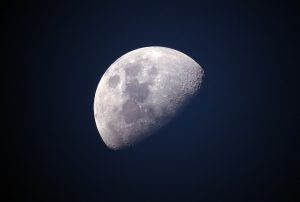 The The National Aeronautics and Space Administration (NASA) is planning to revisit the moon. Earlier this month, NASA announced plans to send a rover to the brightest celestial body in the night sky by 2022. Being that NASA hasn’t visited the moon in several decades — the last moon mission occurred during the 1970s — you might be wondering why it’s planning to revisit the moon. Well, there’s a good reason NASA has its eyes set on the moon.
The The National Aeronautics and Space Administration (NASA) is planning to revisit the moon. Earlier this month, NASA announced plans to send a rover to the brightest celestial body in the night sky by 2022. Being that NASA hasn’t visited the moon in several decades — the last moon mission occurred during the 1970s — you might be wondering why it’s planning to revisit the moon. Well, there’s a good reason NASA has its eyes set on the moon.
When speaking at the International Astronautical Congress, NASA explained that it wants to search the moon for signs of ice. Known as VIPER, the project will involve sending a rover to the south pole of the moon. After the rover has landed, it will scour the surrounding landscape for signs of ice. The rover won’t just look on the surface, however. It’s going to look deep below the moon’s surface using high-tech sensors.
Without an atmosphere, liquid water can’t exist on the surface of the moon. With that said, scientists have theorized that ice is present both on the surface as well as below the surface. NASA says that the moon may contain hundreds of millions of tons of ice. With VIPER, NASA will test its hypothesis by searching the celestial body for signs of ice.
“We actually have a mission right now that I’m very pleased to announce, it’s called VIPER. VIPER is going to rover on the south pole of the moon and VIPER is going to assess where the water ice is. We’re going to characterize the water ice, and ultimately drill and find out just how the water ice is embedded in the regolith on the moon,” said NASA Administrator Jim Bridenstine when announcing the upcoming rover mission.
NASA’s ultimate goal is to identify resources that could prove useful for future manned missions to the moon. All humans need water, and in space, water isn’t a readily available resource. If there’s ice either on the surface of the moon or below the moon’s surface, astronauts could potentially tap into it. First, however, NASA must send a rover to the moon to find the ice
Creating and sending a rover to the moon isn’t cheap. NASA says the VIPER project will likely cost around $250 million. Nonetheless, it could prove instrumental in establishing colonies on the moon. While NASA may push back its projected data, it’s currently aiming for a 2020 rover launch to the moon.



